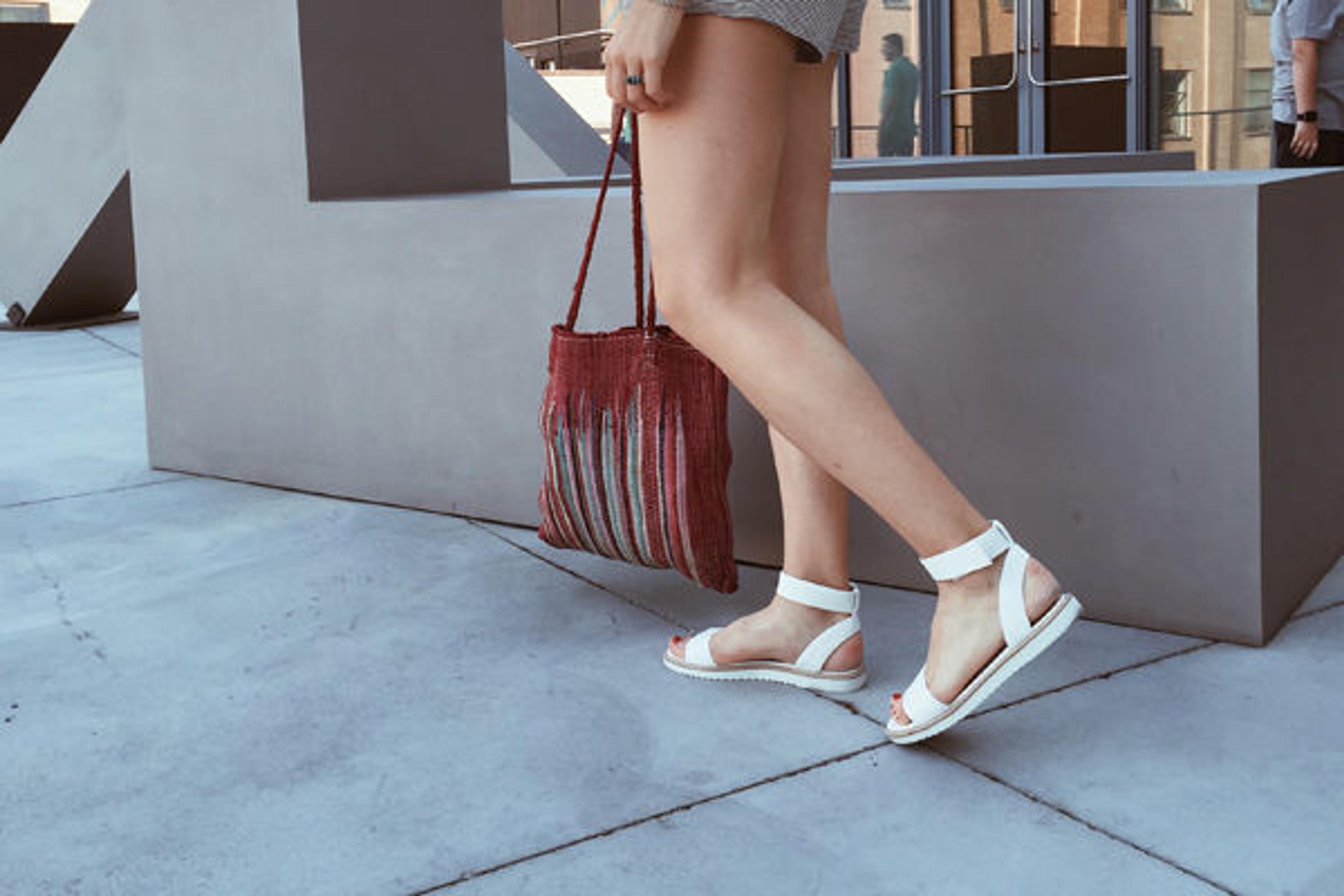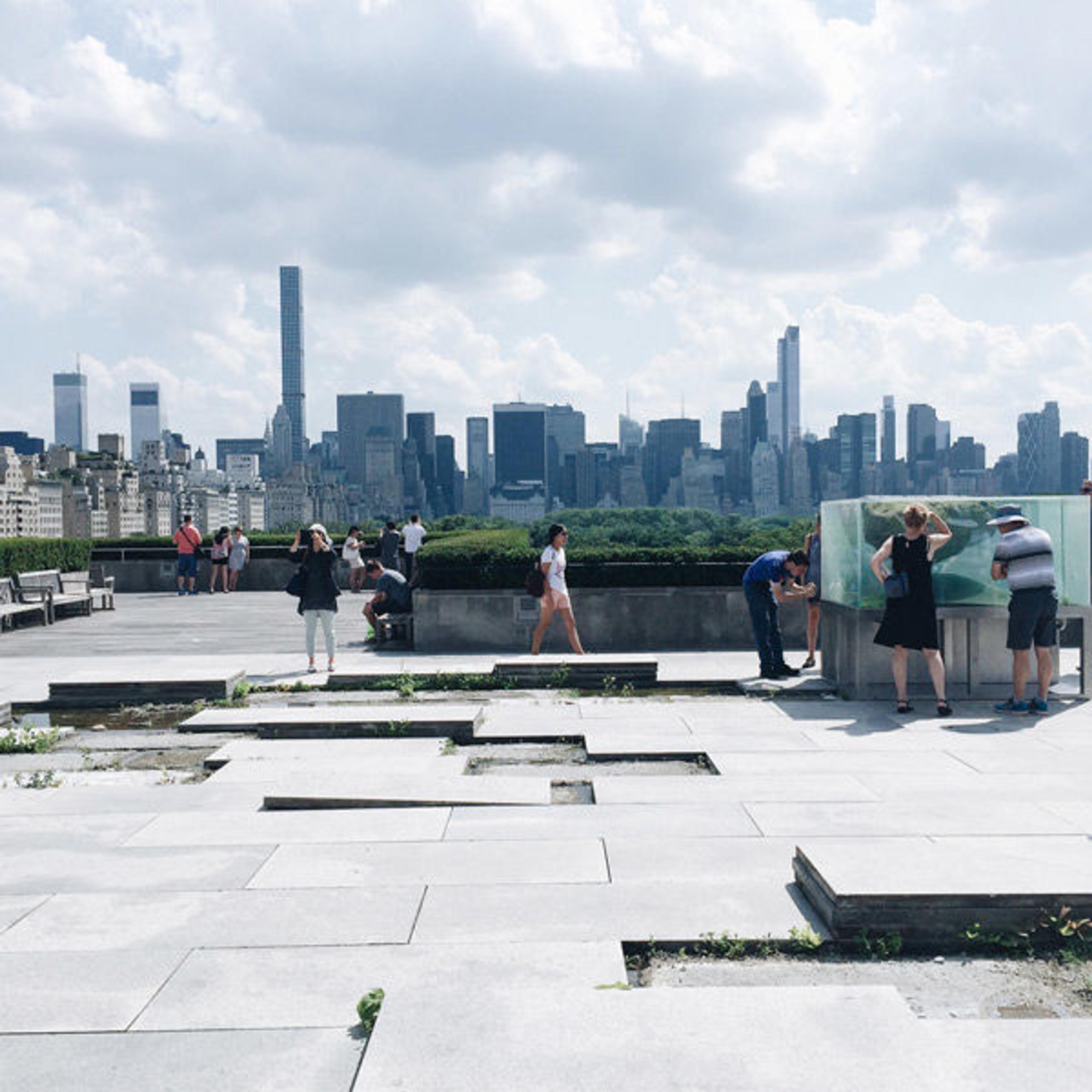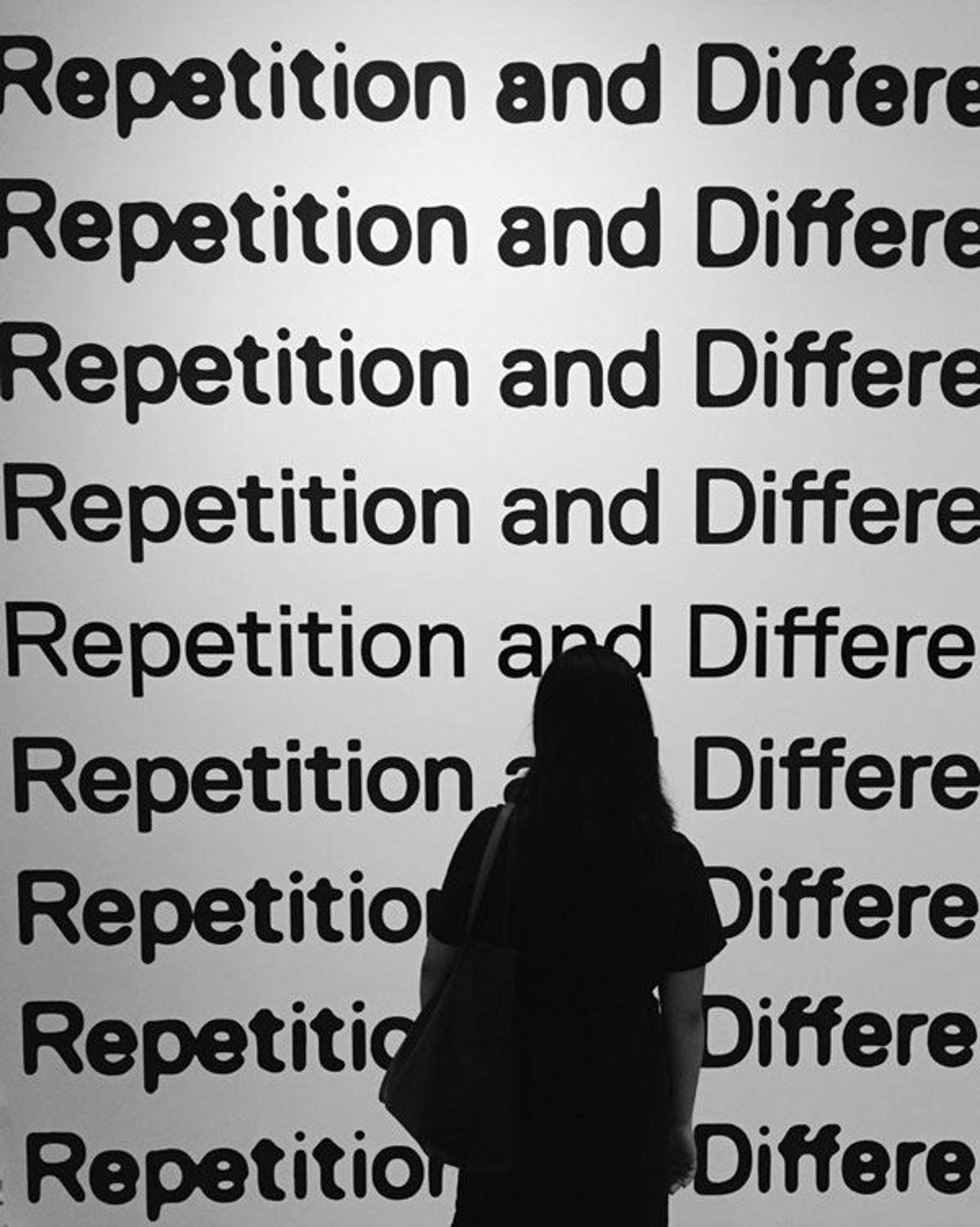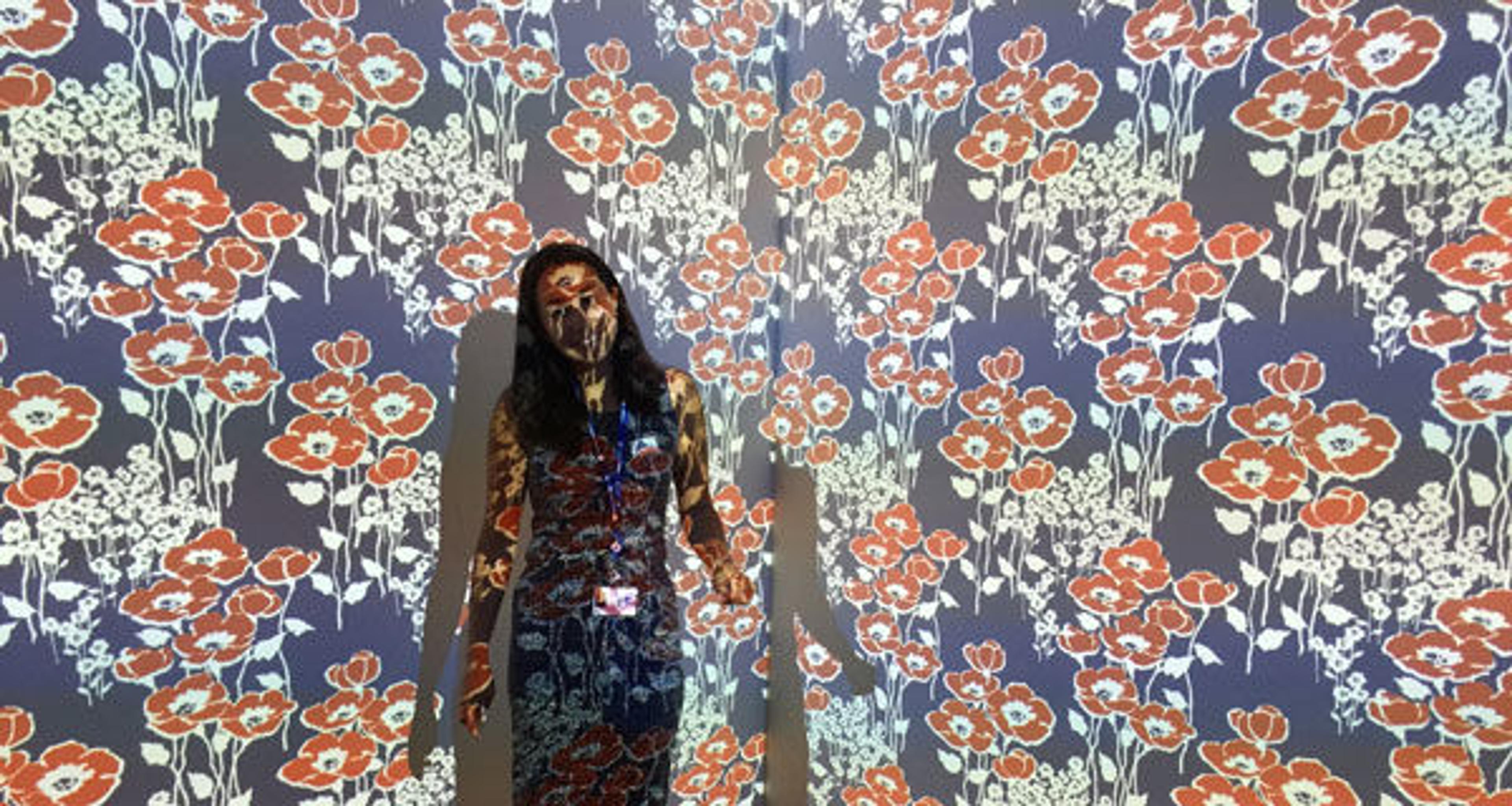Former High School Intern Ariana in the Immersion Room at the Cooper Hewitt, Smithsonian Design Museum. Images courtesy of the author
« Experiencing art in a gallery is like coming out of a subway station in a new neighborhood and trying to navigate the vast unfamiliarity of the cityscape ahead of you. Crisscrossing lines, variegated colors, and the overlapping patterns of light, architecture, and people draw your eye in every direction, creating an overwhelming visual experience. Though neighborhoods each have their own culture and atmosphere, their boundaries melt into each other, asking you to reorient yourself as you meander through them.»

Gwen W. in front of the Whitney Museum of American Art
One of the best ways to orient yourself is to observe; I began to do so not with my eyes but with my camera. I first experimented with photography three years ago and pursued it more seriously over time. I began to take pictures of discrete moments: the ripples of the gondola-like boats on Turtle Pond in Central Park, a single, open window on a glass skyscraper in the Flatiron District, or the waves of crossed legs across from me on the downtown subway. Photography brings me into closer touch with the streets I hurry along each day. It reduces New York's enormity to distinct entities or experiences I can connect with: a person, a building, a daily commute, or a street.

Left: Southern side of the Whitney Museum of American Art. Right: Gwen W. in the exhibition America is Hard to See at the Whitney Museum of American Art
Navigating through the Met is similar to navigating through New York City. As you move from room to room, hall to hall, and floor to floor, you travel across the globe through time and history, moving from one time period or art movement to the next, from one continent or culture to another. The shadows and mirrored walls of the exhibition China: Through the Looking Glass, which recently closed, quickly become the open space and checkered light of The American Wing. The meticulously detailed religious figures in the Renaissance paintings in the European Paintings galleries may lead you to Mark Rothko's blocks of color in the Modern and Contemporary art galleries, and then leave you to reflect on the chiaroscuro drawings in The Robert Lehman Collection.

Left: Coordinating colors with the doors of the Branch Bank Facade in The Charles Engelhard Court. Right: Former High School Intern Ariana posing with Augustus Saint-Gaudens's Diana
Just as I use photography to connect more personally with New York City, I use it to relate to art and to try to make sense of my experiences at museums. During my internship at the Met this summer, I took countless photographs of my coworkers traversing through the Met's stunning galleries, as well as exploring other New York City museums.

Visitors' bodies mimic the New York City skyline as they view the exhibition The Roof Garden Commission: Pierre Huyghe
As I try to capture a person with an artwork, I am forced to think about what makes a meaningful narrative. I have to observe the lines, angles, and color of the work more closely, and decide how the person's body, clothing, posture, expression, and positioning can relate to it in a meaningful way.

Former High School Intern Mely in the Immersion Room. Notice how, on the left, the nexus of one of the diamonds is on the center of her back, making her body seem like it's built out of light.
Some feel that documenting the present through photography can take away from actually experiencing it, or that photographing art takes away from appreciating and engaging with the work, but I find it serves the opposite function for me. As I observe the compositional details of a painting or sculpture, I end up thinking about the artist's process and following the trail of their technique, which gives me a more holistic understanding of the work.

Former High School Intern Teresa in the exhibition Repetition and Difference at the Jewish Museum
When I ask people to pose with the art or in the galleries, I watch as they position themselves to look into the eyes of the subject, stand in front of an area of color that matches what they're wearing, or extend an arm to complement a line in the painting. Through the photograph, they themselves become art, and the viewer and the artwork are united in what I believe is the most intimate museum experience you can have.
